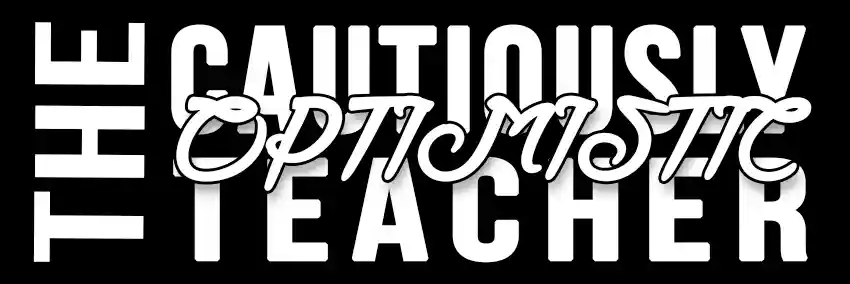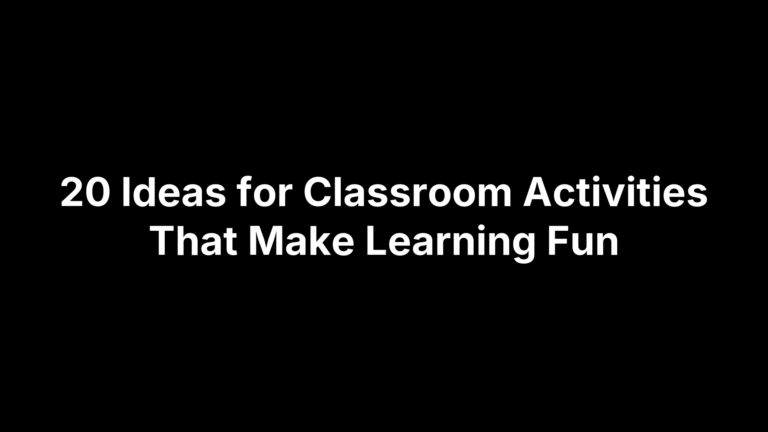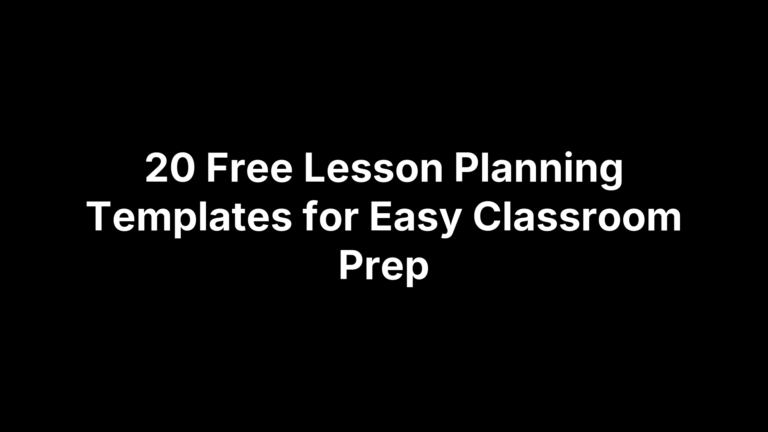What Is SEL? CASEL Competencies and Classroom Strategies
Social and emotional learning (SEL) is the everyday work of helping students—and the adults who teach them—build the skills to understand and manage emotions, set goals, care about others, build healthy relationships, and make thoughtful choices. It isn’t a one-off program or a poster on the wall. It’s a set of teachable, practicable competencies that show up in morning routines, group projects, conflict resolution, independent work time, and the way we talk to each other all day long.
This guide gives you a clear, classroom-ready understanding of SEL, anchored in the widely used CASEL framework. You’ll see why SEL boosts academic learning and behavior, what the five CASEL competencies are, and specific strategies to teach each one with minimal prep. We’ll also cover how to integrate SEL across classrooms, schools, families, and community partners; ways to embed it into academics and daily routines; how SEL connects with equity and trauma-informed practice; where it aligns with—but differs from—mental health supports; practical approaches to assessing SEL with indicators, rubrics, and student voice; and an implementation roadmap using MTSS, including common pitfalls and time-saving tools (yes, including AI). Let’s get started.
Why SEL matters for teaching and learning
For teachers, every minute of learning depends on attention, regulation, and relationships. SEL builds these capacities for students and adults. The research is clear: when schools implement SEL, students show better academic performance and decreases in stress and anxiety. SEL also strengthens belonging and engagement, reduces bullying and isolation, and creates safer, more supportive climates. Embedded in routines and instruction, SEL makes behavior expectations explicit, efficient, and preventive.
- Better academics: self-management and metacognition drive persistence and goal completion.
- Fewer disruptions: proactive routines and co-created norms reduce off-task behavior.
- Inclusive culture: empathy and perspective-taking build respect across backgrounds.
- Future-ready skills: collaboration and responsible decision-making prepare students for work and civic life.
Next: the CASEL framework that organizes the work.
What the CASEL framework is
The CASEL framework—often shown as the “CASEL wheel”—gives you a clear map for teaching SEL. At its center are five interrelated student and adult competencies, surrounded by the key settings where learning happens: classrooms, schools, families, and communities. When these settings work in partnership, they create equitable, supportive environments and align practices across the day. The framework isn’t a program; it’s a flexible, evidence-based foundation you adapt to your local context and priorities, so SEL shows up in instruction, routines, policies, and culture.
- Self-awareness
- Self-management
- Social awareness
- Relationship skills
- Responsible decision-making
We’ll use this CASEL 5 structure to define each competency and share quick-win classroom strategies next.
Self-awareness: what it is and classroom strategies
In the CASEL framework, self-awareness is the ability to understand one’s emotions, thoughts, and values—and how they influence behavior across contexts. It includes recognizing strengths and limitations with a grounded sense of confidence and purpose, linking feelings to values and thoughts, and developing a growth mindset. Building self-awareness helps students name what they feel, know what they bring, and choose how to show up for learning.
- Emotion check-ins: Name emotion and intensity; choose a matching regulation strategy.
- Identity/strengths maps: Surface personal, cultural, and linguistic assets; share one aloud.
- Think–feel–act links: T-chart situations, feelings, and choices to spot patterns.
- Growth-mindset micro-goals: Set a weekly skill goal; reflect with evidence on Friday.
- Purpose journaling: 3 minutes on “Why this learning matters to me.”
- Teacher modeling: Think-aloud your feeling, value, and plan before a task.
Self-management: what it is and classroom strategies
In CASEL’s SEL framework, self-management is the ability to manage one’s emotions, thoughts, and behaviors effectively in different situations to achieve goals and aspirations. It includes stress management, self-discipline, motivation, planning and organization, delaying gratification, taking initiative, and exercising personal and collective agency. In classrooms, strong self-management yields calmer transitions, sustained attention, on-time work, and productive responses to frustration.
- Calm-start and reset routines: paced breathing, stretch, sensory tools.
- If–then plans: prewrite responses for likely obstacles.
- Visual timers and chunking: short sprints with micro-breaks.
- Goal + plan + evidence: daily target, steps, quick reflection.
- Choice within structure: two task paths to build agency.
- Self-monitoring trackers: rate focus/emotion; pick a strategy.
- Teacher think-alouds: narrate noticing, naming, and regulating.
Social awareness: what it is and classroom strategies
In CASEL’s SEL framework, social awareness is the ability to understand perspectives and empathize with others, including across diverse backgrounds and contexts. It also means recognizing social norms—including unjust ones—showing gratitude and compassion, and knowing community resources. Building social awareness nurtures belonging, reduces conflict, and deepens academic discussion.
- Perspective-switch protocols: Argue the opposite view, then summarize with care.
- Empathic listening stems: “I heard you say… Did I get that?”
- Strength-spotting: Name a peer’s specific contribution during group work.
- Norms detective: Identify classroom/social norms; discuss which are fair.
- Gratitude micro-notes: 60-second thank-you to a classmate or staff.
- Community asset mapping: Chart school, family, and local supports students can access.
Relationship skills: what they are and classroom strategies
In CASEL’s SEL framework, relationship skills are the abilities to build and sustain healthy, supportive relationships and to navigate diverse groups. They include clear communication, active listening, teamwork, conflict resolution, leadership, and seeking or offering help. In classrooms, strong relationship skills power effective group work, increase belonging, and keep problem-solving on track.
- Structured roles and norms: Assign facilitator, recorder, timekeeper; co-create collaboration agreements.
- Active-listening stems: “I heard you say…,” “Can you clarify…?,” “What evidence supports…?”
- Conflict repair routine: Pause, name impact, share needs, agree on one specific next step.
- Peer feedback protocol: One warm, one suggestion; use criteria; thank and revise.
- Help-seeking/giving: Post sentence starters; use “ask three, then me” and brief peer tutoring.
- Rotating leadership + reflection: Rotate roles; 2-minute debrief on contributions and next moves.
Responsible decision-making: what it is and classroom strategies
In CASEL’s SEL framework, responsible decision-making is the ability to make caring, constructive choices about behavior and social interactions. It calls for weighing ethical and safety considerations, analyzing information, anticipating consequences, and considering impacts on personal, social, and collective well-being. In class, we teach it by structuring how students evaluate options, justify choices with evidence, and reflect on outcomes.
- Stop–Think–Plan–Review: define the problem, list options, predict outcomes, choose, check.
- Decision matrix: score options against safety, fairness, learning, and time.
- Evidence to judgment: cite facts/data before recommending a course of action.
- Consequence map: chart short- and long-term impacts on self, others, and community.
- Open-minded switch: argue for a nonpreferred option to test assumptions.
- Exit reflection: What went well? What will I do differently next time?
Integrating SEL across key settings: classrooms, schools, families, and communities
CASEL calls for a systemic approach: coordinate SEL across classrooms, schools, families, and communities so students experience consistent language, routines, and support. When these settings partner, they create equitable, inclusive climates and make SEL part of daily instruction, policies, and relationships. Families—the first teachers—bring crucial cultural knowledge, and community partners extend learning in trusted, developmentally rich spaces with access to additional services. Align expectations, build adult capacity, and share feedback to continuously improve.
- Classrooms: Teach competencies explicitly (SAFE), embed routines for regulation and collaboration, and elevate student voice.
- Schools: Establish schoolwide norms, restorative and supportive discipline, advisories, and align SEL with MTSS.
- Families: Use ongoing two-way communication, co-design activities, and send home brief practice menus in home languages.
- Communities: Align SEL language, coordinate after-school opportunities, and create clear referral pathways to supports and mentors.
Integrating SEL into academics and routines
Integrating SEL into academics and routines keeps skills relevant and efficient. CASEL notes that classroom SEL works best when it’s SAFE—sequenced, active, focused, and explicit—and embedded in everyday instruction. Plan quick moments that link the content objective to a social-emotional goal, practice it during work time, and reflect in closing routines.
- ELA—feelings to strategies: Analyze a character’s emotion; students pick a matching regulation move.
- Math—productive struggle: Use error analysis with “think–affirm–revise” to model growth mindset.
- Science—evidence and listening: Claim–Evidence–Reasoning with rotating listening roles and paraphrase stems.
- Social studies—perspectives: Structured seminar to argue multiple viewpoints using empathy sentence starters.
- Routines that teach: Open with a 60-second check-in/goal; transitions use breathing + clear next steps; close with a “what helped me learn” reflection.
- Groupwork alignment: Assign roles and use a simple collaboration rubric tied to CASEL competencies.
SEL and equity: culturally sustaining, trauma-informed practice
SEL should explicitly advance equity. CASEL positions SEL as a lever for educational equity through authentic school–family–community partnerships and inclusive, trusting climates. A culturally sustaining, trauma‑informed stance treats identities as assets, plans for learning differences, and integrates knowledge of trauma into policy and practice so school becomes a protective factor. In practice, that means co‑designing with families, examining unjust norms, and aligning supports so every student can access, participate, and thrive.
- Culturally sustaining: Treat culture as a resource, not a barrier; validate home languages and experiences.
- Universal design: Plan for variability with multiple ways to engage, represent, and express learning.
- Trauma‑informed routines: Use predictable structures, regulation strategies, and supportive (not punitive) responses to behavior.
- Fair norms and policies: Teach students to spot unjust norms; review discipline data and revise practices.
- Two‑way partnerships: Invite families and community partners to inform, experience, and support SEL efforts.
SEL and mental health: how they connect and differ
SEL promotes mental wellness by strengthening protective factors—self-regulation, belonging, problem-solving, and help‑seeking—and schools often see reduced stress and anxiety when SEL is implemented well. Still, SEL is not therapy. It should sit within a broader system of mental health supports that includes promotion, prevention, early-intervention, and treatment, coordinated through MTSS with school counselors, psychologists, and community partners. Pairing SEL with Mental Health Literacy helps educators deliver clear health content while maintaining safe, supportive learning environments.
- Connection: Universal skills and climates that protect well-being.
- Scope: SEL is universal; mental health includes targeted treatment.
- Providers: All educators vs. licensed clinicians.
- Focus: Learning, relationships, and equity vs. symptom reduction/diagnosis.
- Delivery: Daily instruction/routines vs. counseling and crisis response.
- System: Align through MTSS with clear referral pathways.
Assessing SEL: indicators, rubrics, and student voice
Assessing SEL should be formative, growth‑oriented, and anchored to the CASEL 5. Think “What evidence shows students are learning these skills?” rather than “What grade do they get?” Use multiple sources across time and settings—classroom routines, group work, advisories, and family input—to see patterns. Center student voice so learners define goals, track progress, and reflect on impact.
- Translate competencies into look‑fors: e.g., “Paraphrases a peer before responding,” “Chooses a regulation strategy and returns to task.”
- Use simple rubrics: 4 levels (Not Yet, Emerging, Proficient, Extending) with observable descriptors; add an “evidence” notes column.
- Build self‑assessment: quick check‑ins, goal ratings, and week‑end reflections; curate artifacts in a portfolio.
- Structure peer feedback: criteria‑based “one glow, one grow” tied to collaboration or discussion norms.
- Collect artifacts, not just opinions: exit tickets, consequence maps, planning sheets, and participation maps.
- Elevate student voice: brief surveys, listening circles, and co‑authored class norms; share results and next steps.
- Apply equity guardrails: avoid deficit labels, disaggregate patterns, and ensure every student has access to practice opportunities before evaluating.
Implementation roadmap: getting started and scaling with MTSS
Rollout SEL with a “start small, go deep, then scale” plan grounded in MTSS. Tier 1 universal practices reach every classroom; Tier 2 provides targeted small‑group support; Tier 3 offers intensive, individualized help with specialists and families. Use short improvement cycles: choose a priority, teach it explicitly, collect simple evidence, and adjust. Consistency beats intensity.
- Form a cross‑role team: admins, teachers, counselors, student/family voice.
- Align on a shared language: CASEL 5, SAFE, clear classroom norms.
- Pick 1–2 priorities: e.g., entry routines and collaboration protocols.
- Design Tier 1 playbooks: scripts, visuals, and practice schedules.
- Measure and coach: 2‑minute walk‑through look‑fors; 30/60‑day PLCs.
- Layer supports: Tier 2 check‑in/check‑out, small groups; Tier 3 individualized plans.
- Align systems: restorative, supportive discipline; advisories; partner and referral pathways.
Common pitfalls and how to avoid them
Even strong SEL efforts can stall for predictable reasons. Use this quick audit to keep your work focused, inclusive, and sustainable while staying aligned to the CASEL framework and MTSS.
- Program-over-practice: Avoid one-off units. Embed daily routines and teach skills using SAFE (sequenced, active, focused, explicit) methods.
- Skipping adult SEL: Build staff capacity with short practice routines, coaching, and modeling; students mirror adult regulation and language.
- One-size-fits-all: Co-design with families; use culturally sustaining, universally designed, trauma-informed strategies.
- Add-on, not academic: Pair each content objective with a simple SEL objective and reflection; integrate into instruction and transitions.
- Inconsistent across settings: Create shared language and visuals across classrooms, school, families, and community partners; align supports through MTSS.
- Grading SEL like algebra: Use formative rubrics and student self-assessment; give feedback on behaviors, not scores.
- Punitive discipline: Replace with supportive, restorative responses that teach and practice the missing skill.
Time-saving tools to plan and differentiate SEL (including AI)
Great SEL is consistent, brief, and personalized—and that’s where templates and AI can save hours. Build a small toolkit you can reuse across units: a SAFE-aligned mini-lesson template, a set of routine visuals, and a few AI helpers to adapt language, generate prompts, and produce feedback aligned to the CASEL 5. Always review outputs for accuracy, cultural responsiveness, and fit, then pilot with one class before scaling.
- Differentiated Instruction Helper: Tailor SEL mini-lessons for reading levels, language assets, and UDL options.
- Worksheet Maker: Create quick SEL practice (emotion check-ins, decision matrices, consequence maps) from keywords.
- Question Generator: Produce perspective-taking prompts, seminar stems, and reflection questions tied to CASEL competencies.
- Report Card Commentor: Draft strengths-based, specific SEL feedback with next-step suggestions.
- Visual timers and routine cards: Support self-management during transitions and work sprints.
- One-minute surveys/polls: Elevate student voice and track climate and belonging over time.
- Collaboration rubrics: Reusable descriptors for listening, feedback, and problem-solving to monitor growth.
Key takeaways
When you embed SEL as daily practice—not a once-a-week add-on—you get calmer classrooms, stronger academics, and students who can name needs, collaborate, and choose wise next steps. Your toolkit is clear: teach the CASEL 5, use SAFE instruction, plan with equity, measure growth, and scale through MTSS. For ready-to-use templates, unit plans, and AI helpers, explore The Cautiously Optimistic Teacher.
- Start universal: Launch two consistent routines (entry check-ins and collaboration norms).
- Teach explicitly (SAFE): Sequenced, active, focused, and explicit skill practice.
- Integrate with academics: Pair each content objective with a simple SEL goal.
- Center equity: Use culturally sustaining, UDL-based, trauma‑informed design.
- Align across settings: Coordinate language and supports with families and community partners.
- Assess for growth: Use observable indicators, rubrics, and student voice; iterate within MTSS.







